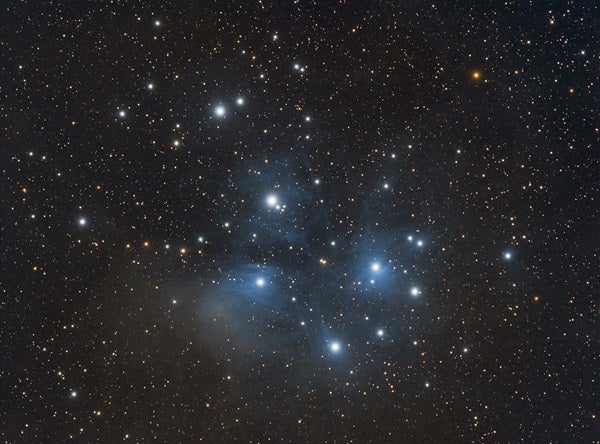Adults generally have no trouble subitizing up to four objects, and some can do a bit better. Try it yourself with vitamin tablets or grapes. If you place three pills on a table, you won’t have to mentally count out 1-2-3. Instead, a quick glance instantly tells you three pills are present.
Try it with four. Then five, which is a bit harder, and which studies show will delay your “count” by a quarter of a second. Some people can subitize higher numbers, but accuracy normally declines after four.
Patterns can help us cheat when we’re subitizing. Most famously, the pips on a set of dice are sufficiently familiar that the majority of us can glance at a die and immediately distinguish between the face that depicts four and the face that displays six.

Want to learn more about pulsars and other extreme objects in our universe? Check out our free downloadable eBook: Exotic objects: Black holes pulsars, and more.
We immediately perceive if Jupiter is accompanied by three Galilean satellites, as opposed to all four. And since one of them — Ganymede — is distinctly brighter than the others, while only one — Callisto — wanders more than 10 Jupiter widths from the planet (and is also the dimmest), we can even “subitize” their identifications, meaning we grasp it all instantly. OK, you’ve got to recognize a third moon to identify all four. The easiest instant-glance method: Of the remaining two, both of which are never far from Jupiter, Europa is a discernible 0.3 magnitude dimmer than Io.
Voilà. Instant subitization of the Galilean satellites and an almost-as-fast identification of each one. Announce the info to your companions, seem like a genius, throw your scope back into your SUV, and drive away. All pointlessly accomplished in 14 seconds.
Under dark skies, the Pleiades beg for your subitizing skills. Average eyes can see six stars under most suburban conditions. If you already know that six falls within your subitization skill set, you’re in business. Especially since here, the pattern provides extra assurance. Experienced observers know the Pleiades’ outline in their sleep: It resembles a little dipper. Like pips on a die, this makes their total number easy to discern and also lets you instantly spot any additional members that excellent skies or a recent optometrist visit may turn up.
Where I live, eight stars are always visible to the naked eye, and spying 11 is not uncommon. The easiest “extra” Pleiad (when using the singular, you’re supposed to say “PLEE-ad”) is the star Pleione (“PLEE-oh-nee”) on the upper left, just above Atlas, the leftmost bright member. In the always-enjoyable one-upmanship part of an astro-meet, you could be the first to claim subitization of the Seven Sisters.
Probably we all subitize the Hyades too, whose five main stars and easy V shape make it a snap. So, let’s at least stretch it to six by including Lambda (λ) Tauri, the star the entire V points to like an arrow. And, bingo, you can’t deny the Hyades are subitizable.
Bet you’ve never read that last sentence anywhere else. If you have, let us know and we’ll send you a pair of giant fuzzy dice.










